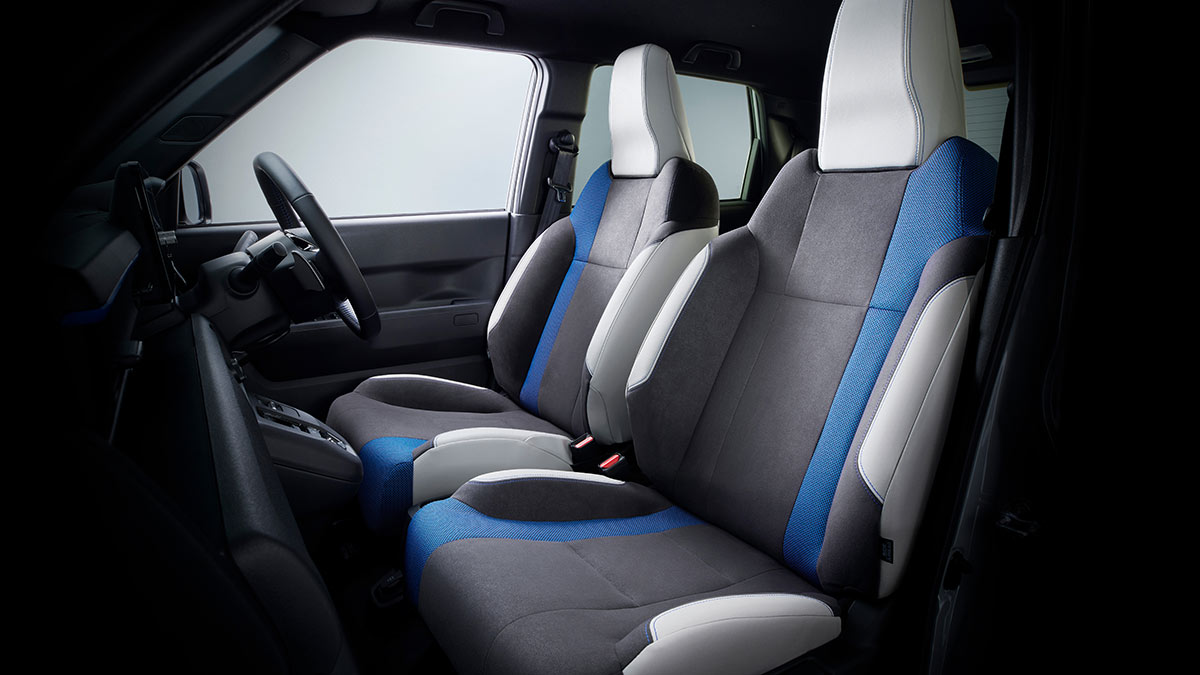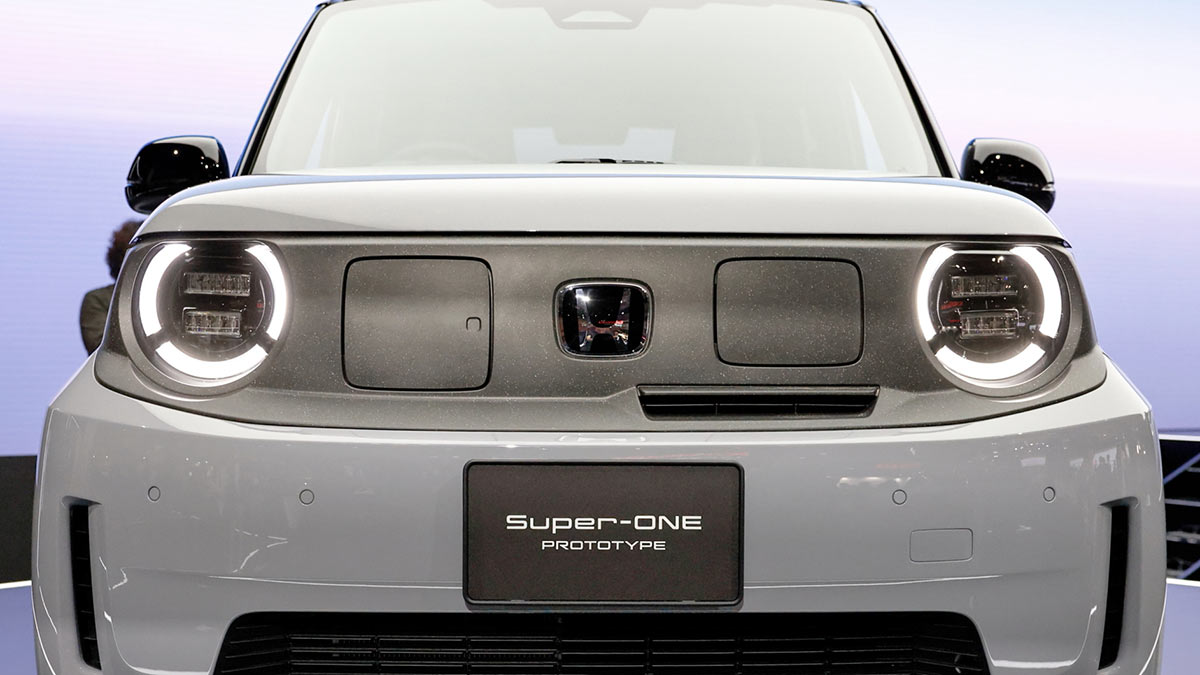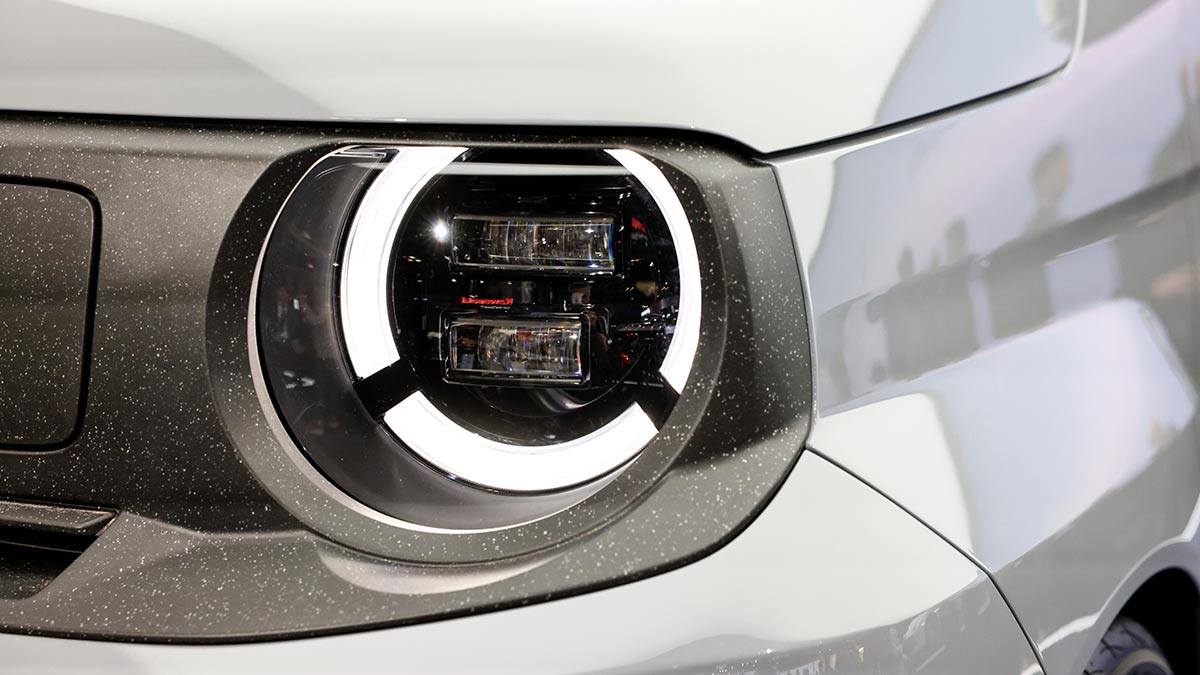You can now buy an EV for $25,000 and there’s a wide range of electric cars and SUVs for less than $45K from BYD, MG, GWM, Chery and other brands. Here are the cheapest EVs to buy in Australia right now.
2026 Honda Super-One EV: price, specs and release date in Australia

The tiny Honda Super-One electric hatch is coming to Australia in 2026, but will it get close to the BYD Atto 1 on price? Here’s what to expect with Honda’s first EV Down Under.
Honda’s first EV in Australia will be the all-new Honda Super-One – a tiny, sporty hatchback that’s due to arrive in the second half of 2026.
Smaller than the smallest EVs currently available in Australia, including the BYD Atto 1 and Hyundai Inster, the 2026 Honda Super-One will become one of the cheapest cars Honda sells in Australia, positioned below the Honda Civic hatch and, most likely, the Honda HR-V Hybrid.
According to Honda Australia president and CEO, Jay Joseph, the Honda Super-One will be a “fun and unique option for city-living Australians”.
“Honda Super-One is a unique proposition for Australians living and working in dense urban environments, blending small car useability with premium Honda design and engineering,” he says. “Developed from Japanese kei car concepts, Honda Super-One is designed to be an agile, quiet and playful inner-city EV that’s as fun to drive as it is to own.”
How will the Honda Super-One stack up in Australia? Let’s take a closer look ahead of its launch.
More: Research and compare electric cars on sale today in Australia
In this article

The pocket-sized 2026 Honda Super-One has a muscular, squared-off look that will be easily recognised on Aussie city streets.
When does the Honda Super-One go on sale in Australia?
Known as the Super-N in overseas markets, the Australian-spec Honda Super-One will go on sale in the second half of 2026. It was recently shown in near-production prototype guise at the 2025 Japan Mobility Show and Honda Australia has subsequently confirmed that local testing will be carried out ahead of its launch later next year.
“Honda is renowned for our attention to detail and reliability,” says Honda Australia CEO Jay Joseph. “That’s why the Honda Super-One will launch in Australia following completion of a local testing program.”
More: Australia’s best electric SUVs, utes and cars of 2025
How much will the Honda Super-One cost?
Pricing for the 2026 Honda Super-One is still to be confirmed but the pint-sized electric hatch will be the cheapest new passenger car Honda sells in Australia, positioned below the Honda Civic that starts at $49,900 drive-away. It’s also expected to match, if not undercut, the Honda HR-V Hybrid SUV (from $39,900 d/a).
This will ensure the Super-One is at least competitive against other battery-electric hatchbacks – all of which are larger than Honda’s tiny city EV – as well as affordable electric SUVs. It won’t start as low as the BYD Atto 1, which launches soon from around $25,000, but should offer an interesting bite-sized alternative to the GWM Ora (from $35,990 d/a), MG4 (from $37,990 d/a), Chery E5 (from $38,990 d/a), Leapmotor B10 (from $38,990 d/a) and Hyundai Inster (from $39,990 d/a), among others.
In a similar move to Honda, Mitsubishi conducted an Australian market study of the Mitsubishi EK X electric kei car last year but concluded that it was “uneconomic in its current form as an entry city car”. Honda also sells the N-One in Japan that’s more closely matched to the EK X, but the carmaker is clearly confident the Super-One – which is based on the N-One but has a sportier, upmarket edge – will attract enough buyers in Australia to make it viable here.
2026 Honda Super-One exterior design
Japanese kei cars are ultra-compact vehicles designed to meet strict size and power limits, offering exceptional efficiency and easy city driving. As such, the 2026 Honda Super-One is a four-seater hatch that measures less than 3600m long and no more than 1600m wide. Overall height is also less than 1550mm in keeping with the requirement for kei cars to fit into multi-storey carparks in Japan.
For comparison, the BYD Atto 1 – also a four-seater – is 3990mm long, 1720mm wide and 1590mm tall. But where the Atto 1 is cute and sleek, the Super-One has a tuned, street-machine look that’s sure to appeal to certain buyers.
Honda points to the prominent “blister fenders” encasing wide tyres to emphasise a low, wide and aggressive stance. It’s a boxy little number, as seen with many kei cars, but Honda claims to have improved its aerodynamic performance with front and rear air ducts.
Black four-spoke, double-arm 16-inch alloy wheels with red front brake callipers and low-profile Yokohama Advan Fleva tyres (205/45R16) also underscore its performance intent.

The 2026 Honda Super-One has a horizontal design theme around the cabin.
What is the Honda Super-One like inside?
Continuing the sporting theme, the 2026 Honda Super-One cabin is equipped with heavily bolstered bucket seats up front with grey and white tones and a thick blue ‘racing’ strip and matching stitching.
Honda says the horizontal orientation of the instrument panel reduces “visual noise” and creates a clear field of vision for the driver to focus more on what lies ahead. There’s a central 9.0-inch touchscreen and a digital driver’s display that includes a triple-gauge cluster when set in Boost Mode. The latter also brings “co-ordinated lighting sequences” into the cabin.
Physical switches for heating, ventilation and air-conditioning (HVAC) are provided in a lower panel, including single-zone temperature control (with a tactile rotary dial) and two-level front seat heating. The steering wheel is also heated, but the switch for this is placed among a lower bank of buttons on the right-hand side of the dash near the driver’s door.
There’s little room between the front seats (just enough for a single cupholder and a shallow tray), so the transmission switchgear and drive mode selector are placed on an upright console mounted below the dash.
The interior is said to be spacious for this class, but it’ll be tight in an Australian context. The high-voltage battery is relatively thin and positioned underneath the centre floor section to maximise cabin and cargo space.
The two rear seats fold down to increase the load space, creating an almost-flat floor. As with most EVs, there is no spare tyre – just a tyre repair kit.
More: Hatch vs small SUV: what’s the difference and which is best?

Sports seats in the Honda Super-One have thick bolstering and striking blue inserts.
What is the range of the Honda Super-One?
Powertrain details are still to be confirmed for the 2026 Honda Super-One, but it will build on what’s available with the Japanese-spec Honda N-One which uses a front-mounted 47kW/162Nm electric motor with a 29.6kWh battery. The claimed driving range based on the WLTC testing standard is 295km.
Expect a higher e-motor output for the Australian-bound Super-One to keep it competitive with rivals – the BYD Atto 1 produces 115kW/220Nm, for example – but the battery capacity and range are likely to be around the same mark as the N-One. A one-pedal driving mode will be offered, helping maximise efficiency.
Honda engineers have developed a ‘Boost Mode’ for the Super-One, which increases power output and synchronises a simulated seven-speed automatic transmission with the ‘Active Sound Control’ system. According to Honda, Boost Mode is designed to “generate powerful engine sound and sharp gearshift feel, as if driving an engine-powered vehicle with a traditional multi-gear transmission”.
“In Boost Mode, the Super-One prototype stimulates the driver’s senses – including visual and auditory senses, as well as a tactile sensation of acceleration and vibration – offering an uplifting EV driving experience,” the company says.
The Super-One has already undergone testing in Japan, the UK and other countries across Asia, with Australia feeding into the program before it’s launched here. This will include assessment of its dynamic performance, electronic driver assistance systems and compatibility with charging infrastructure.
The local arm of the Japanese carmaker says that the work will help ensure the EV’s “composed ride and handling, charging solution and vehicle safety systems perform optimally in congested Australian CBDs”.
Figures from Japan show that the 29.6kWh battery in the Honda N-One takes about 4.5 hours to fully recharge (from the point where the low charge warning light comes on) using a 6kW AC power supply, as found with dedicated EV home chargers. This can be reduced to about 30 minutes (up to 80% capacity) with a DC fast-charger with at least 50kW.
There are two charging ports at the front end of the Super-One – one for AC charging and the other for DC.
More: How to charge an electric car at home and how long it can take
What safety and technology features on Honda Super-One?
The 2026 Honda Super-One will be fitted with an array of advanced driver assistance systems (ADAS) under the ‘Honda Sensing’ umbrella, including traffic jam assist, speed sign recognition, lane departure warning/intervention, pedestrian collision mitigation, lead car departure notification, automatic high beam and adaptive cruise control.
Other safety features include dual front, front side and curtain airbags, the latter extending to the rear seat compartment, as well as ISOFIX child restraint connection points for both rear seats.
It’s not clear whether the Super-One will meet the criteria for a maximum five-star ANCAP safety rating, but Honda says a lower rating would not rule it out for sale in Australia.
In Japan, the Mini-EV platform that underpins the Super-One, N-One and N-Van offers bidirectional charging capability. This includes Vehicle to Load (V2L), where external electrical appliances can be powered on the road using the car’s high-voltage battery, as well as Vehicle to Home (V2H), which allows the battery to be used as a power source at home.
It’s unclear whether bidirectional charging will be available in Australia, most notably V2H (and V2G) if Honda switches to a more universal DC connection port (from CHAdeMO to CCS2). Japanese models also offer connected services through a Honda Total Care smartphone app, which allows owners to perform remote functions such as setting cabin temperature, charging times/levels and a minimum state of battery charge when using with V2L and V2H.
More: Guide to bidirectional charging in Australia: V2G, V2H & V2L
The information provided is general advice only. Before making any decisions please consider your own circumstances and the Product Disclosure Statement and Target Market Determinations. For copies, visit racv.com.au. As distributor, RACV Insurance Services Pty Ltd AFS Licence No. 230039 receives commission for each policy sold or renewed. Product(s) issued by Insurance Manufacturers of Australia Pty Ltd ABN 93 004 208 084 AFS Licence No. 227678.






